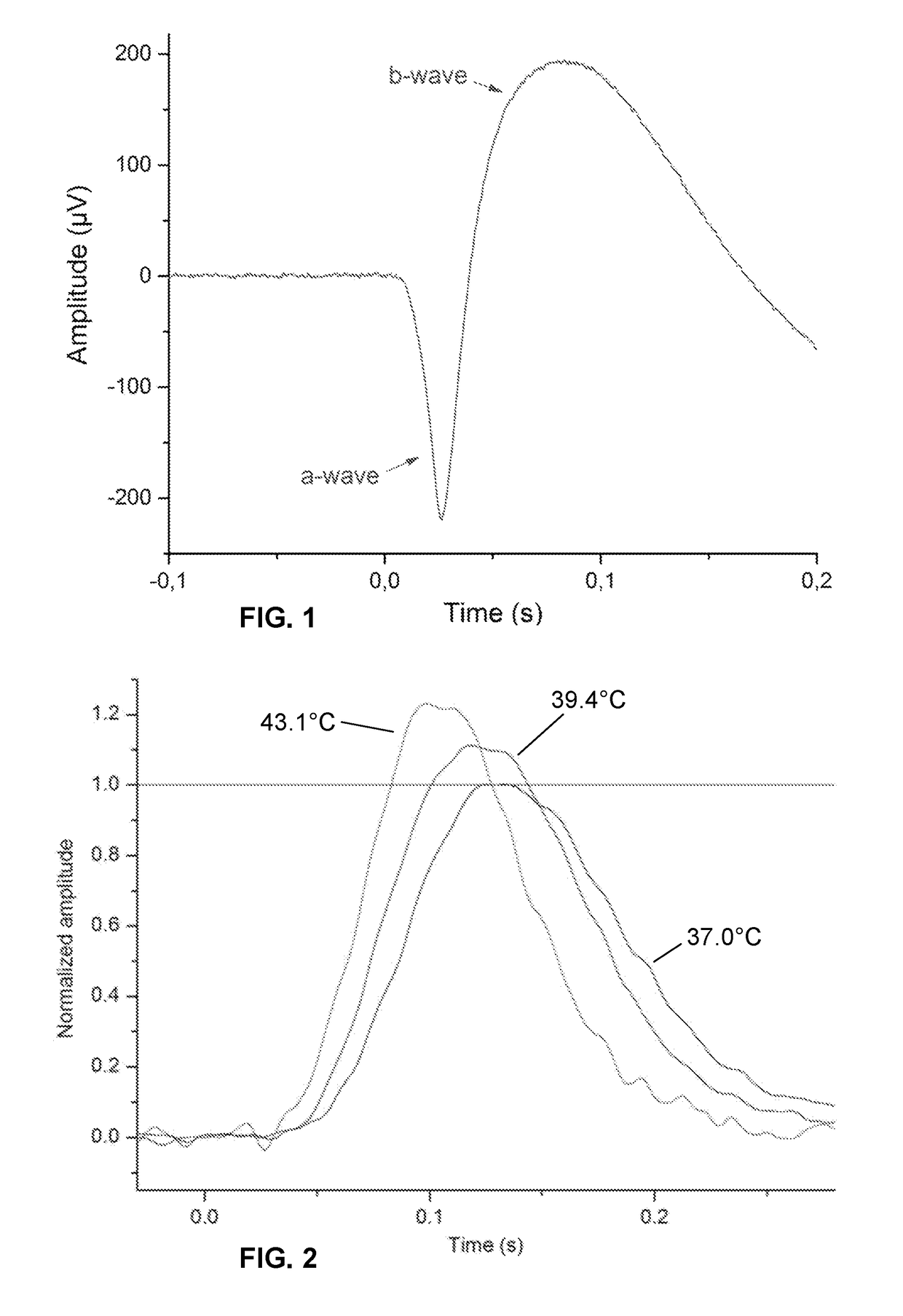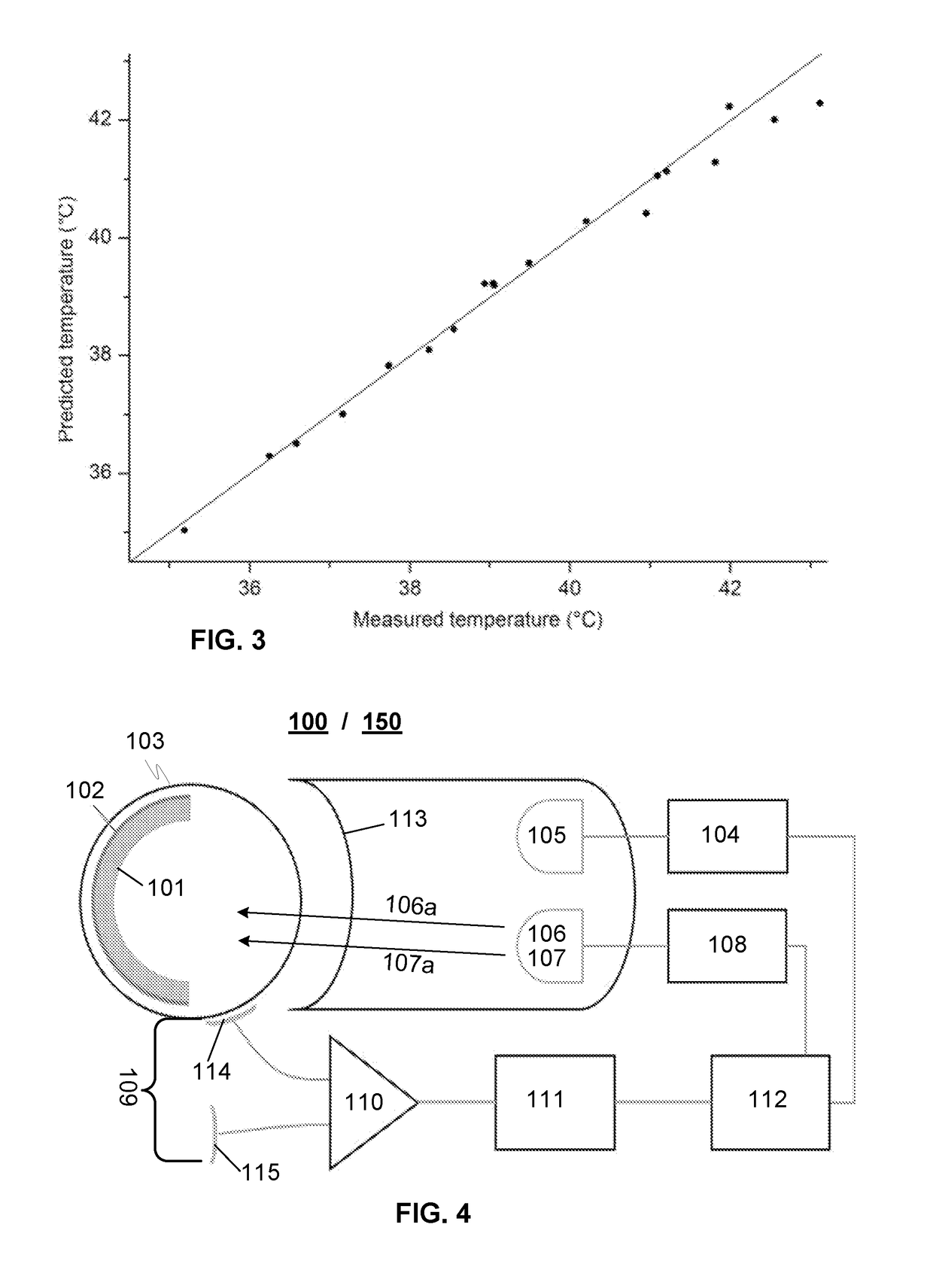Device and method for non-invasive monitoring of retinal tissue temperature
a technology of retinal tissue and temperature, applied in the field of devices and methods for non-invasive monitoring of retinal tissue and retinal pigment epithelium temperature, can solve the problems of difficult reading area, inability to accurately measure the actual temperature, and difficult reading area, etc., to achieve fast, accurate and reliable results
- Summary
- Abstract
- Description
- Claims
- Application Information
AI Technical Summary
Benefits of technology
Problems solved by technology
Method used
Image
Examples
Embodiment Construction
[0029]FIG. 1 illustrates a principle of an exemplary ERG signal recorded from a mouse retina showing the a-wave and the b-wave according to an advantageous embodiment of the invention. According to an embodiment, the temperature of the photoreceptor layer and / or the retinal pigment epithelium can be determined combining temperature information deduced from changes in photoresponse kinetics and changes in photoreceptor sensitivity. When gaining temperature estimates from long-wavelength sensitivity best resolution is achieved when short-duration pulses of light weak enough to produce linear range b-wave responses are used, i.e. the amplitude of the responses should not be larger than approximately 15% of the maximal amplitude attainable with strong stimuli.
[0030]For gaining temperature estimates from photoresponse kinetics, changes in a-wave or b-wave kinetics or in both can be analyzed. Best resolution is achieved with linear-range b-wave responses, because in the linear range the p...
PUM
| Property | Measurement | Unit |
|---|---|---|
| time | aaaaa | aaaaa |
| wavelength | aaaaa | aaaaa |
| wavelength | aaaaa | aaaaa |
Abstract
Description
Claims
Application Information
 Login to View More
Login to View More - R&D
- Intellectual Property
- Life Sciences
- Materials
- Tech Scout
- Unparalleled Data Quality
- Higher Quality Content
- 60% Fewer Hallucinations
Browse by: Latest US Patents, China's latest patents, Technical Efficacy Thesaurus, Application Domain, Technology Topic, Popular Technical Reports.
© 2025 PatSnap. All rights reserved.Legal|Privacy policy|Modern Slavery Act Transparency Statement|Sitemap|About US| Contact US: help@patsnap.com



